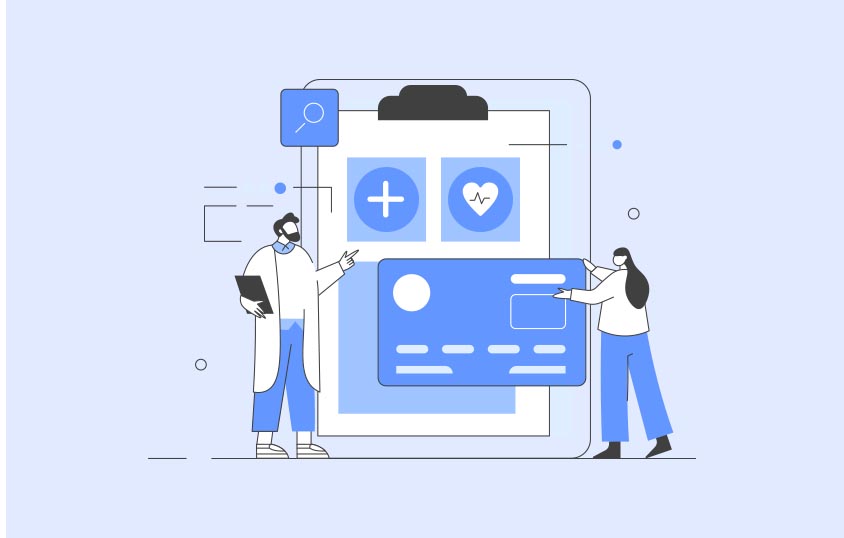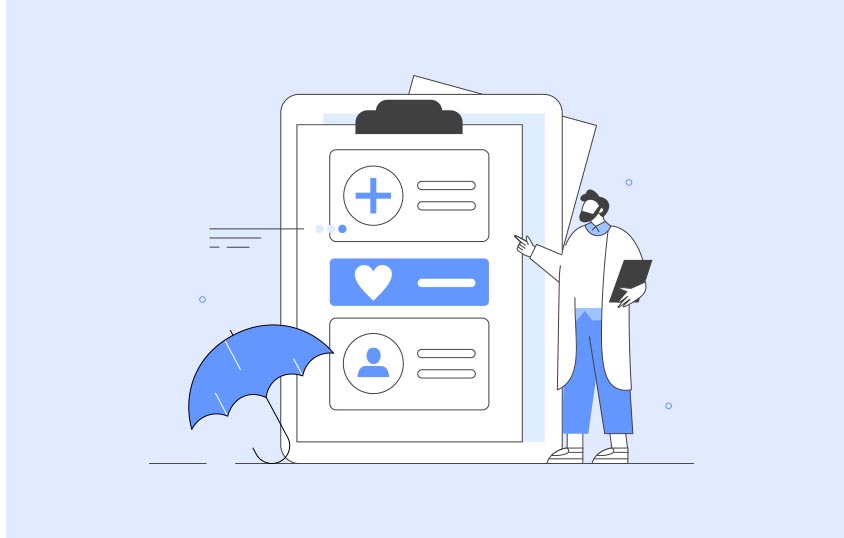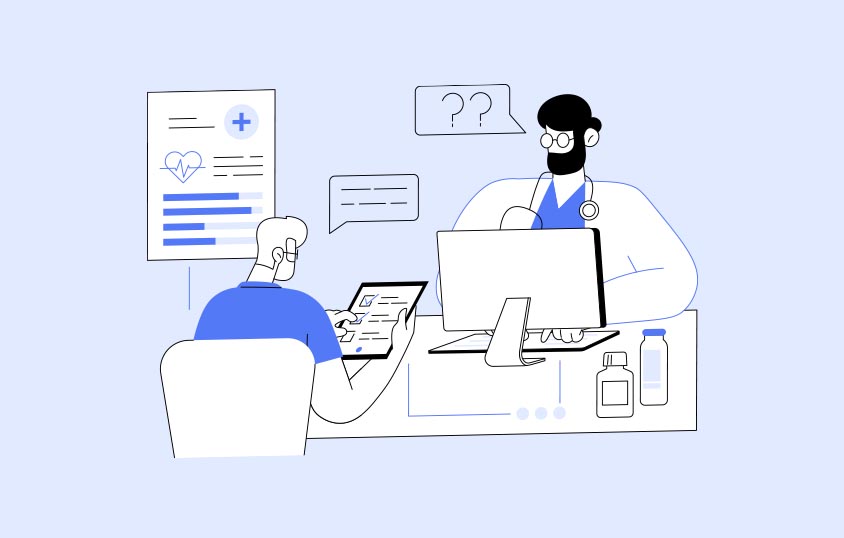Content
Recent Posts
How Does EHR Help Providers with Drug Prescriptions?

Medication management is one of the most important aspects of healthcare. Providers need to ensure patients get the right drug in the right dose at the right time. Traditional paper prescriptions often left too much room for error, handwriting could be misread, notes could get lost, and pharmacies sometimes had to call for clarification. Patients also faced delays or confusion about how to take their medications.
Electronic health record (EHR) systems changed this process. By embedding prescriptions into secure digital platforms, EHRs allow providers to prescribe medications more accurately, send orders directly to pharmacies, and give patients easier access to their prescriptions. Systems like Epic Systems, TherapyNotes, and SAP Healthcare show how digital prescribing improves safety and efficiency across different care settings.
Content
How EHR Platforms Support Safer & Efficient Prescription Workflows
At the core, EHRs consolidate a patient’s medical history into one system. When prescriptions are tied to that record, providers see allergies, diagnoses, lab results, and prior medications before writing an order.
For providers, this means fewer phone calls and less paperwork. For patients, it means faster access to medications and a smoother experience.

Benefits of EHR in Drug Prescriptions
Accuracy and safety
EHR systems improve safety by:
- Checking for drug interactions and allergies
- Using standardized drug libraries to reduce spelling or dosage mistakes
- Sending real-time alerts for contraindications and duplicate therapies
Workflow efficiency
Prescribing also becomes faster:
- One-click refills simplify ongoing treatment
- Templates help manage chronic conditions
- Pharmacy benefit manager integration shows covered alternatives immediately
Patient experience
Patients see tangible benefits such as:
- Shorter pharmacy wait times
- Access to prescriptions and refill requests through portals
- Clearer dosage instructions
Compliance and security
EHRs help providers stay compliant with strict regulations:
- Support for Electronic Prescribing of Controlled Substances (EPCS)
- Audit trails for every order and change
- Built-in HIPAA compliance
Key Features of Prescription Support in EHRs
The most effective systems share common features, including:
- E-prescribing for direct pharmacy connections
- Decision support tools with drug-to-drug and drug-to-allergy alerts
- Medication reconciliation across providers and care settings
- Clinical decision support (CDS) linked to patient records
- Reporting tools to analyze prescribing patterns and costs
Limitations of EHR Drug Prescriptions
While effective, EHR prescribing is not perfect. Some common challenges include:
Alert fatigue: Safety alerts are useful, but too many can overwhelm providers. When an EHR sends constant warnings, some critical and others minor, clinicians may begin to tune them out. This makes it easier to miss serious problems like harmful drug interactions, which weakens the safety the system is designed to provide.
Integration gaps: Not all pharmacies connect smoothly with every EHR. When the systems do not work well together, prescriptions may not go through right away or may need extra steps like printing or faxing. This can delay care for patients, add extra work for staff, and reduce the efficiency EHRs are meant to bring.
Costs and training: Setting up an EHR can be expensive, especially for smaller clinics. Costs include licensing, installation, and ongoing maintenance. On top of that, staff need training to use the system properly. If training is rushed or incomplete, mistakes may happen and staff may be less willing to use the system.
Database maintenance: EHRs rely on updated drug databases to give safe and accurate guidance. If the database is out of date, the system may miss new interactions, drug recalls, or dosage changes. Without regular updates, providers risk making decisions based on incomplete information. Keeping databases current takes time and resources, which can be hard for some organizations.

Best EHR Platforms for Drug Prescribing
Epic Systems
Epic is widely used in hospitals and large healthcare systems. Its prescription tools make sure medications stay accurate when patients move between providers. It connects smoothly with pharmacies, and real-time formulary checks help providers see insurance coverage before prescribing. Because of its size and features, Epic works best for large organizations that manage thousands of prescriptions every day.
TherapyNotes
TherapyNotes is designed for behavioral health providers. It focuses on psychiatric prescriptions and supports secure, compliant e-prescribing. The system also tracks medications within therapy notes and treatment plans, including controlled substances. This makes it a practical and affordable choice for small and mid-sized mental health clinics.
SAP Healthcare
SAP Healthcare is built for large and international organizations. It helps hospitals follow drug regulations in different countries, links prescriptions to supply chains to avoid shortages, and provides detailed analytics on prescribing patterns and costs. It is best suited for large hospital networks or multinational healthcare systems.
Unify Your Healthcare Operations
Future of EHR & Drug Prescriptions
The next wave of prescription management will be driven by advanced technology. AI-powered tools will suggest medication options based on patient histories and outcomes. Predictive analytics will help providers anticipate when patients are at risk of skipping doses or abandoning treatment altogether.
EHRs are also becoming more connected to telehealth. Remote visits can now end with secure prescriptions sent straight to the patient’s pharmacy. Mobile apps will make it easier for providers and patients to manage prescriptions anytime, anywhere.

Conclusion
Drug prescribing has moved far beyond paper slips and phone calls to pharmacies. With EHR systems, providers can make safer, faster, and more informed decisions while giving patients a smoother experience at every step. Features like drug interaction alerts, direct pharmacy connections, and secure compliance tools reduce errors and improve access to medication.
Each platform brings something different to the table. Epic Systems delivers scale and advanced features for large hospitals. TherapyNotes offers practical and affordable tools for behavioral health clinics. SAP Healthcare provides global compliance and analytics for multinational organizations. While challenges such as costs, training, and system integration remain, the benefits outweigh the drawbacks.
Looking ahead, technology will continue to strengthen these systems. AI-powered prescribing, predictive tools for adherence, and telehealth integration are set to make the process even more precise and patient-friendly. For healthcare organizations of all sizes, adopting an EHR with strong prescription support is not just helpful; it is essential for delivering safe and effective care.